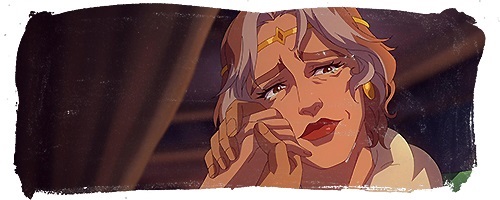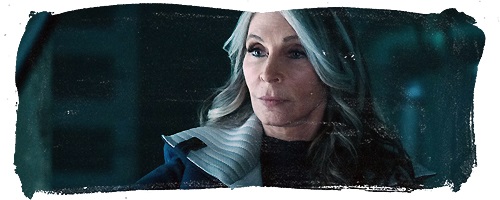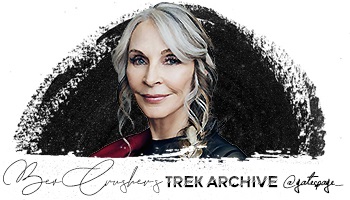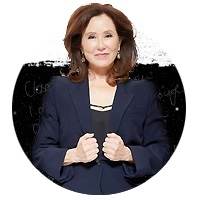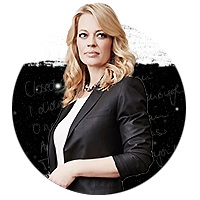
Kurt Anthony Krug
July 19, 2021
Both Star Trek: The Next Generation (TNG) alumni Gates McFadden and Brent Spiner believe their former co-star LeVar Burton should become the permanent host of Jeopardy!
“LeVar’s a beautiful soul. He has a lot of wisdom,” said McFadden, alias Dr. Beverly Crusher on TNG. “I think he would be superb. I think he is born to do it. He’s perfect. I hope he gets it.”
Ever since Jeopardy! host Alex Trebek died in late 2020, many people have been guest hosts, most notably news personalities Katie Couric, Robin Roberts, Savannah Guthrie, George Stephanopoulos, actress/neuroscientist Mayim Bialik (The Big Bang Theory), and Burton, who played Lt. Cmdr. Geordi LaForge on TNG. Burton also hosted the children’s series Reading Rainbow for more than 20 years.
Spiner – who played the android Lt. Cmdr. Data (as well as Data’s “brothers” Lore and B4, Data’s creator Dr. Noonien Soong, and Dr. Altan Inigo Soong) on all seven seasons of TNG, the four TNG movies, and the first season of Star Trek: Picard – believes it’s a “no-brainer” that Burton should host Jeopardy!
“I think LeVar’s the perfect person to do that job. I can’t think of anyone more qualified than he is. LeVar has proven himself as a host, an educator, a personality, and this and that. He’s a very smart guy with a really great personality, which I think is key for the job. He’s got all of the qualities,” said Spiner, who added tongue-in-cheek, “If ever Vanna White decides to step down from Wheel of Fortune, I think I’m a pretty qualified person to do that job. She definitely has better legs, but I know the alphabet very well and I am an expert at turning.”
They also spoke highly of Jonathan Frakes, alias Cmdr. William Riker, who also directed many TNG episodes, as well as 1996’s Star Trek: First Contact and 1998’s Star Trek: Insurrection. In fact, they stated he was their favorite TNG director.
“He didn’t take himself too seriously. He was fun and loves actors. He treats actors with respect and knows what he’s doing – that’s a good combination. And he’s a friend,” said McFadden.
Added Spiner: “Jonathan really learned his stuff; he is a fine director. I always feel I’m in good hands when Jonathan’s directing. I just finished doing an episode with him and it was just great! We have a shorthand, of course, and it’s great to work with somebody I’m that close to. He’s really skilled now and it’s not just me saying that about my friend; I think if you ask anyone on the set – any crew member, any other actor – they all take pleasure in working with Jonathan. Definitely my favorite TNG director.”
Both McFadden and Spiner have been keeping busy lately. McFadden is currently hosting the podcast Gates McFadden InvestiGates: Who Do You Think You Are?. Spiner – who will appear on the second season of Picard, scheduled for 2022 – has written a novel called Fan-Fiction: A Mem-Noir: Inspired by True Events. They recently discussed these projects and their careers at length with Showbiz Junkies.
Gates McFadden
Born in Cuyahoga Falls, OH, McFadden (nee Cheryl Gates McFadden) discovered performing at a very young age.
“I think I was very much pushed to perform. I was taking dancing lessons and I was on The Paige Palmer Show (in Cleveland, which ran from 1948-73) when I was a little girl at (ages) 5-7. I just have memories that go way back,” recalled McFadden. “Then I started doing community theater. I took acting lessons at a place in Akron – which I loved – called Coach House Theater. That’s how it started. It was my major in college, but I continued studying dance and movement.”
Most notably, McFadden choreographed the dance scene between Beverly and Data in the TNG episode, “Data’s Day.”
“I have major scoliosis in my spine… Had I not done dance, I would look like a hunchback. If I hadn’t done so much dance, it would be very noticeable,” she said. “I was never told by my mother that she knew that, but I was always wondering why I wasn’t selected to be a ballerina because I felt I was really good. The problem was I didn’t have a back that could bend like all the girls’ backs in my class. Even though I did some gymnastics moves and everything, it was much harder for me because my back couldn’t go in that direction. Several of my friends went on to become Rockettes.”
McFadden graduated cum laude from Brandeis University in Waltham, Mass. She also studied at École Internationale de Théâtre Jacques Lecoq in Paris under French actor/movement coach Jacques Lecoq, whom she considers her greatest mentor.
She’s taught acting at Brandeis, the American Academy of Dramatic Arts in New York, Brooklyn College, the New York University Tisch School of the Arts, Fairleigh Dickinson University in New Jersey, the University of Pittsburgh, and the University of Southern California. In fact, USC offered her the prestigious George Burns Teaching Fellowship.
“When they asked me to come aboard full-time, I turned it down because it wasn’t what I wanted to do. I was feeling universities were becoming increasingly corporate. There’s too much politics in things that should not be full of politics,” said McFadden. “I couldn’t teach on a regular basis; I wouldn’t be able to fit that in my schedule.”
Doing Choreography for Jim Henson
Theater is McFadden’s first love. She was a regular in the New York theater scene for nearly a decade. Her performance in Cloud 9 at the Lucille Lortel Theatre in New York City – directed by Tommy Tune – earned McFadden her equity card. Further, Muppets creator Jim Henson saw her performance and became interested in her work.
“It was a brilliant production. It had been already running a year and I was hired in the lead role as a replacement. In that role, I played a lot of different characters,” said McFadden. “(Henson) had seen me in it. That meant he knew I could act.”
McFadden appeared in 1984’s The Muppets Take Manhattan. She talked about auditioning for it.
“I was excited. I hadn’t tried out for a film – this was the first. It was a small scene, but it looked like fun because I adored the Muppets. I was stunned when I was led up to (Henson’s) office and I was the only person there!” recalled McFadden. “He didn’t ask me to read because he already knew I could act… but he didn’t tell me that. I’m thinking, ‘Wow, this is how it’s gonna be! All these directors will bring you into their office and offer you a part? Holy cow – this is gonna be fun!’” she laughed. “That’s the only time it happened in my life. Usually, you’re in a room with 100 other people who look exactly like you and you’re all vying for the same part.”
Henson asked McFadden to direct the animatronics in 1985’s Dreamchild, which was about author Lewis Carroll creating the classic Alice’s Adventures in Wonderland. Henson’s Creature Shop built puppets of the Alice characters, except they were distorted and less friendly-looking.
“I had been teaching movement for a long time and I had worked with masks. Lecoq had worked with masks on many things. I had worked for years on articulation, different sorts of mime – you really need to know all that for puppetry,” she said. “I had never studied puppetry, but there are quite a few links between understanding where the audience needs to focus by the way you move the head, the arms – the articulation – breaking down moments of action.”
McFadden continued: “I was to choreograph the scenes, put them on video, and I had live actors as well in the scenes. I had to choreograph these scenes, do different versions, put them on film, and then the director (Gavin Millar) would decide which ones he liked. All that had to happen in a week. It was really scary. I felt like I was in a war zone because I’ve never had that expertise about animatronics. It was very complicated. Now, it’s nothing like it was then. There were seven people who were working on just the face of the Mad Hatter… It was really detailed. Jim took me to the studio, introduced me to people, and then he said: ‘I have to go back to (Los Angeles). Good luck.’ That was my baptism of fire.”
Labyrinth
From there, McFadden became the director of choreography and puppet movement for 1986’s Labyrinth, a collaboration between Henson and Star Wars auteur George Lucas. The movie starred a 14-year-old Jennifer Connelly (who would later win the Oscar for A Beautiful Mind) and the late rocker David Bowie. For McFadden, Labyrinth was a “pretty extraordinary experience.”
“Jennifer was so young and obviously stunningly beautiful then. She’s become such a fantastic actress – it’s wonderful to see that happen. I worked with her on a few things, and she was wonderfully receptive. I’m so happy for her that she’s gone on to such a wonderful career,” said McFadden. “I didn’t have that much of a chance to be a fangirl (around Bowie) because I had so much responsibility; there was always something I had to do, and I was always working on things. It wasn’t like we were hanging out, but there were moments that were really, really fun. He really was an extraordinary artist; I admire his work as an artist so much. He was so down-to-earth and just normal. He’d chat with people; he wasn’t at all pretentious – it was lovely.”
Initially, she turned down Labyrinth because her acting career was taking off.
“I was cast in Hannah and Her Sisters. I already had my costume fittings. I was shooting a 2-month job on TV. I had a play. I was really feeling great. Then I had an accident while cross-country skiing and had to have major surgery… It took me two months to recover. I lost all three jobs. It was tough. I was like, ‘Oh, man, what am I gonna do? I need the money.’ Jim came back with the idea of doing Labyrinth. I said okay. I knew it was gonna be in England and gonna be nine months of my life. That’s how that happened,” said McFadden.
Of all Henson’s creations, McFadden’s favorite is his most famous: Kermit the Frog.
“For me, Kermit is the one that stole my heart,” she said. “I think that little frog is one of the greatest puppets ever made and it’s connected to who Jim is – the voice, the idea of the silliness of it all, the sensitivity. The song, ‘It’s Not Easy Being Green,’ is such a metaphor for so many ways people feel about themselves. When you see how lovable this creature is… (it) really brings such hope and joy.”
Becoming Beverly Crusher
After Labyrinth, McFadden returned to the stage. While at a screentest in L.A., her agent called her while enroute to the airport and strongly encouraged her to audition for TNG in May 1987.
“My agent – who happened to be an enormous Star Trek fan – called me and said, ‘Oh my God, Gates! You’ve got to go to Paramount! They just started today. There’s gonna be a new series and they’re doing the first casting of the female roles. You gotta go! It’s today! I told them you were going back, and they said you can come over today.’ I go, ‘Really?’ ‘Yes, if you do anything for me, please do this!’ And I had never seen (the original) Star Trek, so there I went,” recalled McFadden.
Upon arrival at the Paramount lot, McFadden met a secretary and asked which one of the three parts they wanted her to read.
“‘I don’t care. Pick whatever one you want’ – that’s what was said to me. So I looked at all three… The scene I loved was the comic scene with Beverly in ‘The Naked Now’ episode, where she’s coming on to Picard (Patrick Stewart) because she has this virus (that made the entire crew lose sight of their inhibitions and act as though they were drunk),” she said. “It was this silly, wonderful scene – I loved it. So I did it. I thought she was a comical character – forget that… That’s how it happened. They offered me the part later.”
And she turned it down twice.
At the time, McFadden was in a play called The Matchmaker.
Fortunately, the creators didn’t give up on her so easily.
“I happened to be in San Diego. It worked out,” said McFadden. “When they were shooting the pilot, they said, ‘We’ll fly you back for the evening show and have a limo to pick you up and drive you to your performance. You can sleep in the back, then we’ll take you to a hotel.’ And I did that. What a gift that they came back.”
However, the late Maurice Hurley, TNG’s head writer and showrunner, did not get along with McFadden. At Hurley’s demand, she was let go at the end of the first season. Diana Muldaur joined TNG as Dr. Katherine Pulaski in the second season. Meanwhile, McFadden appeared in 1990’s The Hunt for Red October as Dr. Catherine Ryan, wife of the movie’s hero Jack Ryan (Alec Baldwin, 30 Rock). However, the majority of her scenes were drastically cut.
“The word was (Hurley) said to (creator Gene Roddenberry), ‘Either she goes or I go.’ That’s what I heard, and it makes sense to me,” she said.
However, Muldaur didn’t gel with the rest of the cast as hoped. A huge letter-writing campaign from fans demanded McFadden return to TNG.
“I couldn’t believe it; I was stunned. The fans really wanted the character back. I think it was Patrick who made it happen (and demanded McFadden return). He’s the one who called me and said” – and McFadden imitated Stewart’s distinctive British accent – “‘Darling, would you consider coming back?’” Speaking normally, “(Roddenberry) said, ‘We’re gonna ask her back,’ so that’s what happened… That’s what was told to me.”
So, McFadden returned to TNG as Beverly in the third season and remained until the series finale, whereas Hurley left TNG as the end of the second season. McFadden also played Beverly in the four TNG movies and did voiceover work in two PC games. She even directed the seventh season TNG episode, “Genesis,” her only directorial credit to date. However, McFadden won’t be reprising her most famous role in Picard season two.
“Patrick is just terrific to work with. He and I had a great chemistry, I always felt,” she said. “I loved our scenes. I hope someday to work with him again.”
InvestiGates
McFadden spoke about how her podcast came about. Brian Volk Weiss, CEO of the Nacelle Company, simply asked her.
“It just landed on my lap,” said McFadden. “He had to convince me. I said, ‘I can’t do a podcast. What am I going to talk about?’ He kept coming back and said, ‘Do whatever you want. Do conversations with your friends. Do this and that.’ It was the pandemic and I thought, ‘Well, heck, I’ll set up a sound studio and try it.’ It’s really about having the courage to be willing to fail. You might fail at a venture, but you want to try it to see if you can learn something and have fun – all of those things happened.”
Her podcast is a light-hearted and intimate sit-down conversational series featuring her close friends and Trek colleagues reminiscing on their careers, personal lives, and everything in between. Guests have included Spiner, Frakes, Burton, Nana Visitor, et al. The first season is 15 episodes. To date, 11 have aired.
“I am talking to people I dearly love and trying to learn something new about (them). I do my research and go through their lives again. I have pages of things I could ask them about,” said McFadden. “I’ve had a lot of fun and have had a lot of fun. I enjoy doing it. I hope people enjoy listening.”
Boldly Going for 55 Years and Beyond
For Trek’s 55th anniversary this year, McFadden will participate in the History Channel’s 8-part documentary series called Center Seat. It will debut this fall.
“Everyone has something that has great meaning to them in their lives… I have had people come up to me and say, ‘I became a surgeon because of your character.’ How fantastic is that?” said McFadden. “The fact is I see not only my character, but all of our (TNG) characters as role models. We are role models. We have been role models for a couple of generations coming up. We were the show the family could watch together.”
In regard to Trek’s staying power, it’s a show that makes you think and allows you to see both sides of a problem, according to McFadden.
“(It) allows you to hold a contradiction in your hand and say, ‘It’s okay. There’s not one that’s good and one that’s bad. They both have a point of view. You’re strong enough to look at both points of view and think about it.’ There’s so many shades of gray,” she said. “People have become so (mired) in their tribes now – ‘No, that person’s wrong and this person’s right!’ I think that’s one of the reasons the show is powerful because it says, ‘Wait, wait, wait! Don’t close off. Stay open. Listen and think about it. What can we do? If we compromise, what are the compromises?’”
McFadden continued: “(Roddenberry and Henson were) two people who really had their finger on what the culture needed in terms of optimism, the future, and just how to enjoy the present and how to get along, to be tolerant of people who are different, to be tolerant of creatures who are different… And what a message, those shows gave. The ethics and values in both of those shows – the Henson shows and (Trek) – are pretty admirable as far as I’m concerned. It’s taken me a while to appreciate it, but I really appreciate it now because it gives me hope and we need hope.”






